If you’re totally new to advertising, typing ‘What is a DMP?’ into search won’t give you the straight answer you’re looking for. Online definitions can lack context and clarity on how money is made or saved. So we decided to literally just draw you the full picture of how it works.
In a nutshell, a DMP* is a digital warehouse that collects, stores, sorts, refines and separates data into valuable insights so it’s segmented and easy to understand for advertisers and publishers. If you’re still not sure if it’s relevant to your business, read the more detailed explanation below.
*If you're new to the industry but are too shy to raise your hand and ask someone, we've provided a layman's explanation of bolded terms at the bottom of the article.
Supply* side (that’s you)
Not sure what supply and demand means? Scroll to the bottom for our friendly explanation.
How data goes in:
1. Boris is Head of Growth and Marketing for a free fitness app that has 3 million active monthly users (MAU)* and he wants to earn additional revenue on top of in-app purchases (IAP)*.
2. He decides to sell his location data to predict.io to earn additional monthly revenue
3. Milton, a friendly sales representative at predict.io audits Boris’ user base to see if they would be valuable to retail brands. You can read here how he estimates how much it’s worth.
4. Milton concludes that Boris’ location data could be very valuable to marketers
5. Boris installs the DMPs software development kit (SDK)* into his app. After a few hours, the SDK begins to automatically send live location data into Milton’s DMP.
6. The DMP begins to receive data, and the DMP begins to categorise it by socio-demographic characteristics. Then it begins to enrich existing segments and create new ones.
7. In two months, a retail company asks the DMP for audience segments based on offline data.
8. Boris’ data is used to create a useful segment for the retail brand, he receives a handsome monthly payment from Milton.
Demand-side brands and marketers
How data goes out:
- Diana is a Digital Manager at a fictional rubber slip-on shoe company called Brocs based in Berlin. Her job is to increase marketing ROI* and her sales team needs to see a 4% increase in sales by the end of Q2.
- Diana wants to find a new partner to achieve better sales on her advertising campaigns. Her aggressive retargeting campaign last year had not seen much return so she wants to better personalise ads for people who looking for comfy, yet ugly rubber shoes.
- Based on market research, she wants to create a custom audience segmentation of chefs and hospital workers who are on their feet for long hours.
- Milton from the DMP already has similar segments pre-prepared for Diana but she only wants to target chefs and hospital workers.
- Milton looks at all of his offline location data that matches Diana’s description and sends her a file of the device IDs to target.
- Diana creates a campaign targeted at Berlin chefs that says, “Not sexy but safe: Sale on Brocs for Cooks! Slip resistant, extra hard toe protection, comfortable for long shifts.” and sends the ad to the devices from the list provided by the Milton.
- The next day, the head chef from fictional restaurant Feurige Hähnchenzeit, sees the ad on his Facebook news feed at 6:45am on his commute to work.
- He clicks on the ad and for the first time begins to explore the different styles of foot-friendly shoes.
- Within the next month, Diane begins to see an increase in traffic to the Brocs online campaign and more traffic into the offline store.
- Milton sends Diane a detailed report and due to the higher accuracy of targeting, Diana increased her conversion rate, lowered her acquisition cost per customer, and exceeded her sales target.
If you’re a publisher and would like to know more information on our DMP visit www.predict.io/dmps. If you’re an advertiser or a brand and would like to know more about predict.io, write us at support@predict.io.
Definitions:
Supply and Demand:
To understand what we mean by Supply Side and Demand Side, we need to look back at the basic economics and how the definition has been adapted to targeted advertising:
1) Traditional supply and demand in the laws of economics
Demand: How much of a product or service is wanted by the market.
Supply: The amount of a product or a service that is available to be consumed by the market.
Example: There are 10 free houses available in Berlin to be rented. That is the market supply for houses in Berlin. Now 15 people want to move to Berlin and rent a house. That is the market demand for houses in Berlin. Since demand is bigger than supply, the supply-side (i.e. house owners) will raise their prices till only 10 people are interested anymore and thus achieve the highest price for their house.
2) Supply and demand in the world of advertising
Demand: the amount of ads (for example a video ad for a new soccer shoes) that companies want to show to users.
Supply: The amount of space available (for example a spot before a youtube sports video) to put ads on.
With the rise of affiliates (third parties who chip in to help everyone out), the concept of supplier and demander expands
3) Targeted advertising supply and demand (in the predict.io context)
Demand: The amount of data that advertisers need to improve their ad targeting
Supply: The web developer who supplies the advertiser or brand with data to improve their ad targeting
Monthly Active Users (MAU): These are users who open the app at least once per month. It’s used as a measure to how ‘active’ your app is. No one wants data from an app that no one ever opens because the data wouldn’t be very useful.
In App Purchases (IAP): Free apps need to make money so they may offer extra content, additional services or features. E.g. Farmville, the simulation social network game that lets you plant your crops and take care of farm animals. Without paying, you can plant broccoli but you have to wait 24 hours to sprout. If you’re willing to put money into the app, your broccoli will sprout immediately.
Return on investment (ROI): Most of the time, we have to spend money to make money and ROI is a measure to see how well that investment went down. It’s calculated as:
Gain from investment - Cost of investment = ROI (%)
Cost of investment
If a company spends money €1000 on YouTube advertisements in one month, and the ads brings in 2 customers worth €10,000 profit, then that was a pretty good investment based on its ROI.
Data management platform (DMP): Raw unprocessed data is a mess! A DMP is a digital warehouse that collects, stores, sorts, and separates data into valuable insights so it's organised, segmented and easy to understand for advertisers and publishers.
Software development kit (SDK): By "kit", we mean a virtual tool box that makes it possible for a developer to plug new software into an existing app. The developer can look into this little tool box and say, "Great there is some instructions, readily available code, debuggers or visual editors (e.g. fancy buttons) I don't have to make a new app from scratch. For example, predict.io SDK makes it possible for apps to send us background location information, so you always know where and when a user arrives or departs without the developer having to spend months fiddling with data directly from the hardware.

